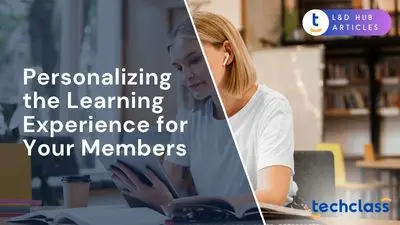
In today’s complex and interconnected business environment, learning and development no longer stop at the company payroll. Organizations are realizing that their success depends not only on the skills of their employees but also on the knowledge and capabilities of people outside the formal workforce. Extended enterprise learning refers to training initiatives that reach beyond internal staff to include external stakeholders such as partners, distributors, franchisees, suppliers, and even customers. By educating this broader network, often called the “extended enterprise” or business ecosystem – companies ensure that everyone who represents or interacts with their brand is informed and aligned. This approach is rapidly gaining traction across industries, as companies see clear links between training their external audiences and achieving strategic outcomes like higher sales, better customer satisfaction, and stronger partnerships.
Forward-thinking HR professionals and business leaders are embracing extended enterprise learning as a way to remain competitive in the modern business world. This trend has been propelled by several factors: the rise of digital platforms that make delivering training at scale easier, the growing importance of customer and partner experience, and the need for consistency in brand and compliance across global operations. With studies showing that over half of companies now deliver training to external audiences and report tangible business benefits as a result, extended enterprise learning has moved from a niche concept to a mainstream strategy. The following sections will explore what extended enterprise learning entails, its growing importance, key benefits it offers, real-world examples of its impact, and effective implementation strategies for organizations.
Extended enterprise learning is an evolution of corporate training that acknowledges a simple truth: a company’s performance is heavily influenced by people outside the organization’s direct payroll. Traditionally, corporate L&D (Learning and Development) focused on employees only. In contrast, extended enterprise learning provides education and training to a wide range of external stakeholders who interact with the business. This extended audience can include:
By offering structured training to these groups, organizations aim to create a knowledgeable and cohesive ecosystem. Every participant in the value chain gains the skills and information needed to contribute effectively to the company’s success. For example, extended enterprise learning might involve certifying reseller partners on product features, providing an online training portal for customers to learn how to get the most from a software product, or educating suppliers about quality standards and compliance requirements.
The term “extended enterprise” itself originated in the 1990s (first coined at the Chrysler Corporation) to emphasize the competitive advantages of treating suppliers and partners as an integrated part of one’s business. In the training context, this concept translates into empowering those partners and external groups with knowledge, so they can perform at the same level as an internal team member would. Essentially, extended enterprise learning takes the view that no company is an island – the more you enable your wider network through learning, the stronger your overall business performance will be.
Several modern business trends have converged to drive the rise of extended enterprise learning across industries. One major factor is the increasingly networked nature of business today. Companies rely on vast networks of partners, service providers, and customer communities to operate globally. As one industry expert put it, “the most successful companies extend their learning beyond their workforce to those who work with them, or will in the future”. When all members of this network share a base level of knowledge and best practices, it creates synergy and consistency. Conversely, gaps in knowledge at any link in the chain (a misinformed distributor, an untrained customer, etc.) can hurt the business’s performance or reputation.
Another driver is the demand for consistent customer experiences and brand alignment. In an era when a customer might interact with a company via third-party retailers, franchise locations, or online user communities, ensuring a consistent, high-quality experience is critical. Training Magazine cites research showing that 55% of companies found extended enterprise learning improved customer relations and 41% said it helped maximize customer retention. This is because trained partners and informed customers are more likely to represent the brand well and stay engaged. A well-known example is in B2B tech firms: many software companies now run customer academies or certification programs (e.g., providing on-demand courses, tutorials, and certificates to users) to increase product adoption and satisfaction. These programs educate customers so effectively that they feel more value from the product, need less support, and remain loyal.
Cost and efficiency considerations are also key. Traditionally, corporate training resources were spent almost entirely on employees, but studies indicate that even a modest investment in external audience training can yield high returns. In fact, a recent Brandon Hall Group study found that a majority of companies devote less than 10% of their L&D budget to extended enterprise learning, yet a significant number report improved business outcomes from that investment. By training customers and partners, organizations often reduce costs elsewhere – for instance, lowering customer support calls because users are better educated, or decreasing errors and rework by suppliers who now understand the processes. One survey found 58% of companies reporting that extended enterprise learning helped reduce their internal training costs. Essentially, money spent on proactive education for external stakeholders can preemptively solve problems and drive revenue, offering a strong return on investment.
Technology has been a critical enabler of this trend. The rise of cloud-based Learning Management Systems (LMS) and online learning content means companies can scale training beyond their four walls efficiently. Modern LMS platforms allow for creating separate learner portals or experiences for different external groups while still managing it under one system. This multi-tenant capability means a company can deliver tailored content to, say, its distributors in one portal and customers in another, each with relevant courses and branding. The convenience of digital learning – accessible anytime, anywhere – makes it feasible to train thousands of external users without the logistical complexity of in-person sessions. As a result, even mid-sized businesses can set up extended training programs and reach a global audience of partners or users with relative ease.
Lastly, competitive pressure is prompting more organizations to adopt extended enterprise learning. If your company isn’t actively educating your customers and partners, chances are your competitor might be doing so. Providing valuable training resources can be a differentiator that attracts partners to do business with you and encourages customers to choose your product (and succeed with it). For instance, in highly competitive industries like tech and finance, companies are creating rich learning ecosystems around their products – think of the many free courses, how-to videos, or certification paths offered by leading firms to cultivate proficient and loyal users. This not only adds value for stakeholders but also helps the company embed itself into its ecosystem, making it harder for rivals to displace them. In short, the modern business world rewards those who invest in knowledge-sharing beyond their organizational boundaries.
A well-executed extended enterprise learning strategy can deliver a range of tangible benefits. Below are some of the key advantages that enterprises are seeing when they broaden training to include external audiences:
Educating customers is a powerful way to enhance their experience with your product or service. When customers have access to training, whether through tutorials, user forums, or formal courses – they can unlock more value from what they purchased. This leads to higher satisfaction and loyalty. For example, a large financial services firm in South Africa, Alexander Forbes, launched a client-facing financial education program to help customers make better decisions for their long-term well-being. The outcome was not only more informed clients but also increased customer retention and engagement for the company. In general, an informed customer base means fewer frustrations and more success stories. Studies back this up: companies report that extended enterprise learning leads to better customer relationships and even boosts retention rates. By turning training into a form of customer support, businesses can differentiate themselves and build loyalty. Customers who feel supported in learning how to use a product or improve their results with it are far more likely to remain customers and become brand advocates.
One of the most direct benefits of training your external partners and sales channels is increased revenue. When resellers, franchisees, or distributors are well-versed in your offerings, they can sell more effectively and confidently. They understand the product’s value proposition, can answer customer questions accurately, and can upsell or cross-sell appropriately. This translates into more deals closed and bigger order sizes. Additionally, knowledgeable partners can shorten the sales cycle by providing correct information without always having to loop back to the manufacturer for answers. Extended enterprise learning also drives revenue through better product usage among customers, when customers know how to fully utilize a product, they are more likely to purchase additional features or renew subscriptions. Industry research reflects these outcomes: in one analysis, nearly one-third of companies said extending learning to partners and customers helped boost their sales numbers. Furthermore, by enabling a wider sales network (including non-employees), a company can expand into new markets and reach more potential buyers than it could with its internal team alone. In short, training amplifies the selling power of your entire ecosystem.
Many businesses depend on a variety of partners and suppliers who represent their brand. Extended enterprise learning helps ensure those partners perform to the company’s standards. When you train your partners, such as implementation consultants, agencies, or franchise operators, you’re effectively standardizing the quality of service they deliver. They become extensions of your company’s workforce in practice, capable of providing the same level of expertise or support. This not only makes the partnership more effective but also deepens the relationship – partners appreciate when a company invests in their knowledge and success. Similarly, educating suppliers on proper procedures, quality criteria, and compliance requirements leads to a smoother supply chain with fewer defects or delays. A good example comes from manufacturing: automotive companies often train the staff of their parts suppliers in lean processes or quality management, resulting in components that meet specs and fewer production line stoppages. Overall, companies that train their external collaborators see improved collaboration and trust, because everyone is literally on the same page (or course!). This strengthens the entire business network and can give the company a competitive edge through a more capable extended team.
Extended enterprise learning can also have a positive impact on the bottom line by reducing various costs. A prime area of savings is customer support. Educated customers tend to be more self-sufficient; they make fewer basic errors and can troubleshoot simpler issues themselves using knowledge from training resources. This means fewer calls and tickets for the customer support team, cutting support costs and freeing those teams to handle more complex inquiries. Another area is marketing and onboarding costs – a well-trained reseller or franchisee will ramp up faster and require less one-on-one assistance from your staff to start generating business. Additionally, by providing standardized training materials to external groups, companies can avoid the inefficiencies of ad-hoc or duplicated training efforts across regions or departments. There is also evidence that companies experience direct training cost savings: for instance, one study noted 44% of organizations saw a reduction in training costs after implementing extended enterprise learning programs. These savings often come from leveraging scalable e-learning content rather than repetitive in-person sessions, and from economies of scale (training many external learners at once). When combined with the revenue gains mentioned earlier, the return on investment (ROI) of extended enterprise learning can be very attractive. Some business leaders even view extended training programs as a revenue generator in themselves – for example, selling access to premium training or certification courses to customers can create a new income stream while also improving product utilization.
Every organization strives to present a consistent brand and to adhere to relevant regulations or standards. However, consistency can falter when external parties are involved, unless they are properly educated. Extended enterprise learning serves as a tool for brand alignment by informing all stakeholders about the company’s values, messaging, and expectations. When franchise owners or sales agents understand the core brand promise and know how to represent it, customers get a uniform experience no matter who they are dealing with. This consistency strengthens the brand’s reputation in the market. Imagine a scenario where a customer gets completely different information from a third-party seller than from the company’s website – that inconsistency erodes trust. Training all external touchpoints helps prevent such disconnects.
Moreover, in many industries (from finance to healthcare to manufacturing), compliance and safety training beyond the employee base is vital. A partner or contractor’s mistake can create legal or safety risks for the company. By extending compliance training (on topics like data privacy, industry regulations, or product safety guidelines) to vendors, resellers, and others, organizations can mitigate risks and ensure that everyone operating under their banner meets required standards. In fact, meeting compliance requirements is often cited as one of the significant benefits of extended enterprise learning programs. A network of trained, compliant partners is far less likely to cause costly violations or damages. In essence, extended training safeguards the company’s brand integrity and reduces exposure to risk by establishing a common baseline of knowledge and ethics across its entire ecosystem.
Extended enterprise learning is not just a theory – many organizations across various sectors have successfully put it into practice. Here are a few illustrative examples and use cases that highlight how it works in the real world:
These use cases show that extended enterprise learning can take many forms – from highly strategic customer and partner academies to nuts-and-bolts compliance modules for third parties. The common thread is that the organizations implementing these programs recognized a gap or opportunity in their business ecosystem that training could address. By extending knowledge outward, they achieved outcomes like greater customer success, improved partner capabilities, consistency, and risk reduction.
For companies considering launching an extended enterprise learning initiative, it’s important to approach it strategically. Training external audiences comes with different challenges than internal employee training (for example, you often have less direct control over learners’ time and motivation). Here are key steps and best practices to effectively implement extended enterprise learning in your organization:
By following these steps – from setting clear intentions through to measuring results – organizations can build an extended enterprise learning program that is both impactful and sustainable. It’s not always a quick process; scaling learning across an extended enterprise takes time and iteration. However, with executive support and a thoughtful strategy, even a small start (like training one group of stakeholders on a critical topic) can demonstrate value and lay the groundwork for broader efforts. Many companies begin with a pilot for one audience and then expand to others as they refine their approach.
Extended enterprise learning represents a shift in mindset from a narrow focus on employee development to a holistic learning culture that encompasses everyone connected to the business. In the modern business world, where boundaries between a company and its ecosystem are increasingly blurred, this approach is becoming not just advantageous but often necessary. By educating partners, customers, and other external players, businesses create a rising tide of knowledge that lifts all boats, the entire network becomes more capable, aligned, and ready to drive success.
For HR professionals and enterprise leaders, the rise of extended enterprise learning is an opportunity to elevate the role of L&D from a support function to a strategic powerhouse. Training is no longer just about internal compliance or employee skills; it’s about enabling growth, ensuring brand consistency, and even generating revenue. When done right, an extended learning program can turn L&D into a competitive advantage. It builds goodwill and loyalty among partners and customers, reduces costly inefficiencies, and creates an army of informed advocates for the brand.
As you consider how to implement or enhance extended enterprise learning in your organization, keep the focus on mutual value. The most successful programs are those that clearly benefit the external learners as much as the company. When your distributors or clients genuinely gain from the education you provide, their success becomes your success. In essence, extended enterprise learning is about forging stronger relationships through knowledge-sharing – breaking down the walls of the company to invest in the success of everyone in its circle. In a business era defined by connection and collaboration, that investment is likely to pay off handsomely. Embracing a broader learning culture now will position your organization to thrive in an ecosystem-driven future.
Extended enterprise learning is training provided to external stakeholders such as partners, customers, suppliers, and franchisees to enhance their skills and knowledge related to a company’s products, services, or standards.
It is increasingly vital due to the networked nature of modern business, demand for consistent customer experiences, cost efficiency, and competitive pressure.
Key benefits include improved customer satisfaction, increased sales, stronger partner performance, cost savings, and better brand consistency and compliance.
Start with clear goals, secure leadership support, tailor content for external audiences, choose the right platform, measure impact, and communicate value to learners.
Yes, it ensures external partners meet quality, safety, and regulatory standards, reducing legal and safety risks across the entire business ecosystem.
.webp)

